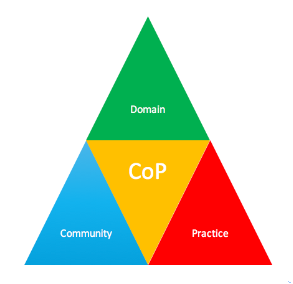Characteristics of communities of practice

Belonging to a CoP therefore gives increased agency to practitioners as it enables them to take collective responsibility for determining what they need to know and cuts across boundaries and formal structures. Key CoP features, then, are autonomy, informality, peer-to-peer learning and the existence of a structured framework within which the social learning takes place (Wenger, 2011).
Furthermore, communities have been described as having a life cycle (Palloff and Pratt, 1999; Seufert, 2000). Seufert, for example, identifies four phases, content, intention, contracting and settlement.
Read more about the notion of community in the context of education here: What is community?
References:
Palloff, R., & Pratt, K. (1999). Building learning communities in cyberspace: effective strategies for the online classroom. San Francisco: Jossey-Bass.
Seufert, S. (2000). The NetAcademy as a medium for learning communities.Educational Technology and Society,3(3), 122–136.
Wenger, E. (2011). Communities of Practice: A brief introduction.

